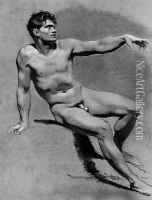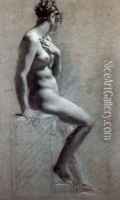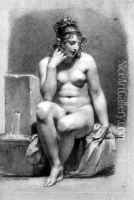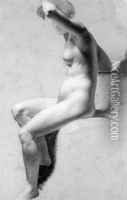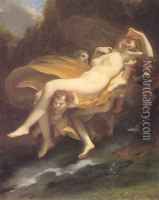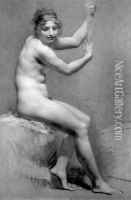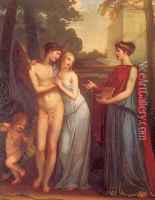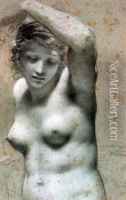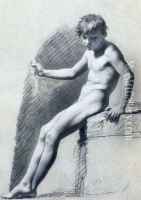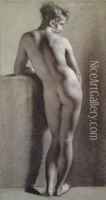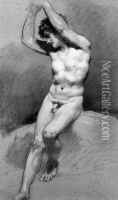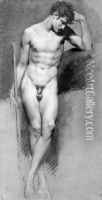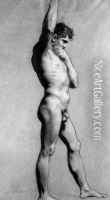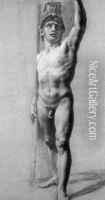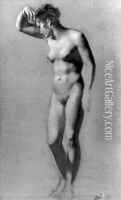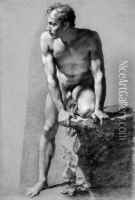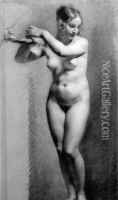Pierre-Paul Prud'hon Paintings
Pierre-Paul Prud'hon was a renowned French painter and draughtsman, famous for his allegorical paintings and portraits that reflected the turbulent social and political climate of his time. Born on April 4, 1758, in Cluny, France, Prud'hon grew up in a modest family. His artistic talents were recognized early on, and he received his initial training at the École de Dessin in Dijon. He later won a scholarship to study in Rome, where he spent several years. This period had a profound impact on his artistic development, and he was particularly influenced by the works of Leonardo da Vinci and Correggio.
Upon returning to France, Prud'hon found his country in the midst of the French Revolution. His style, which combined elements of Neoclassicism and Romanticism, captured the complexities of the era. He became known for his unique blend of classical grace with a melancholic, sometimes almost ethereal quality. His work was characterized by soft lighting, delicate brushwork, and a palette that often utilized cool colors.
Prud'hon's career progressed as he gained patrons among the new political elite and the restored Bourbon monarchy after the fall of Napoleon. He was commissioned to create several important works, including the ceiling painting 'Justice and Divine Vengeance Pursuing Crime' for the Palace of Justice in Paris. He was also appointed as a drawing master to Napoleon's sisters and later became a court painter.
Despite his professional success, Prud'hon's personal life was fraught with difficulties. His tumultuous relationship with his student and mistress, Constance Mayer, was well-known, and her tragic suicide in 1821 deeply affected him. Prud'hon's own health deteriorated, and he died in poverty on February 16, 1823, in Paris.
Today, Prud'hon's works are admired for their poetic and emotional depth. He remains an important figure in French art history, bridging the gap between Neoclassicism and Romanticism, and influencing the next generation of artists.
